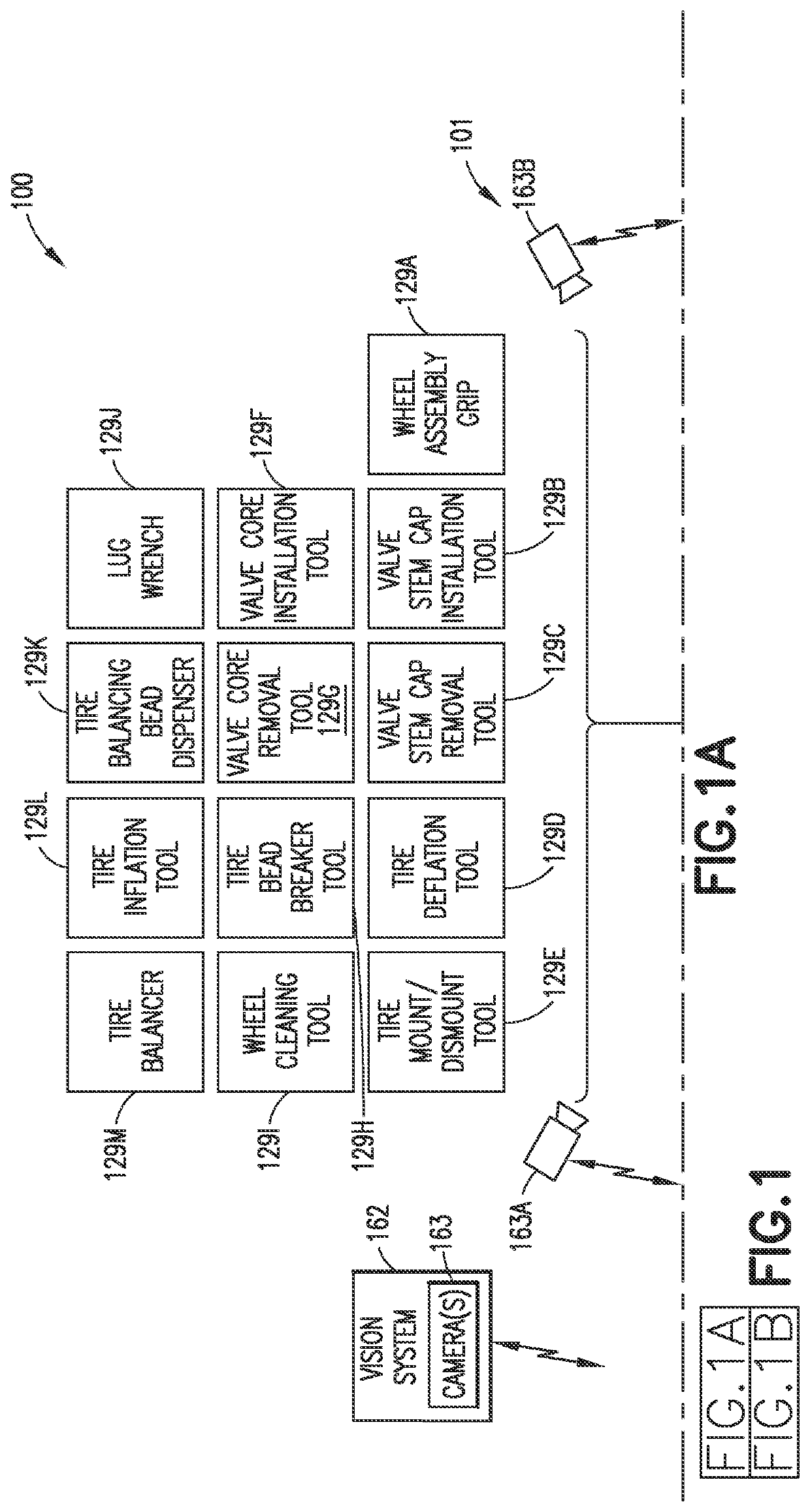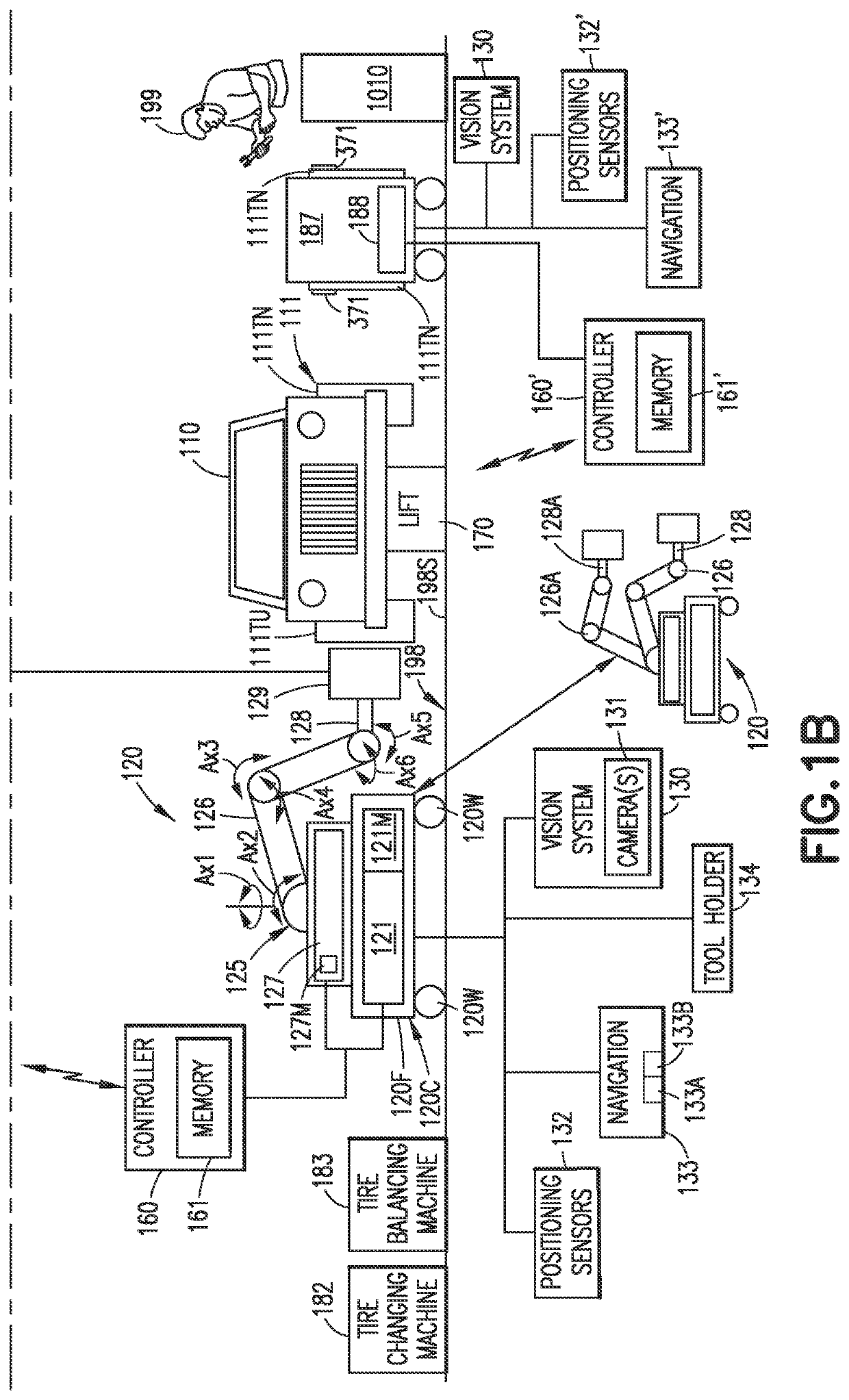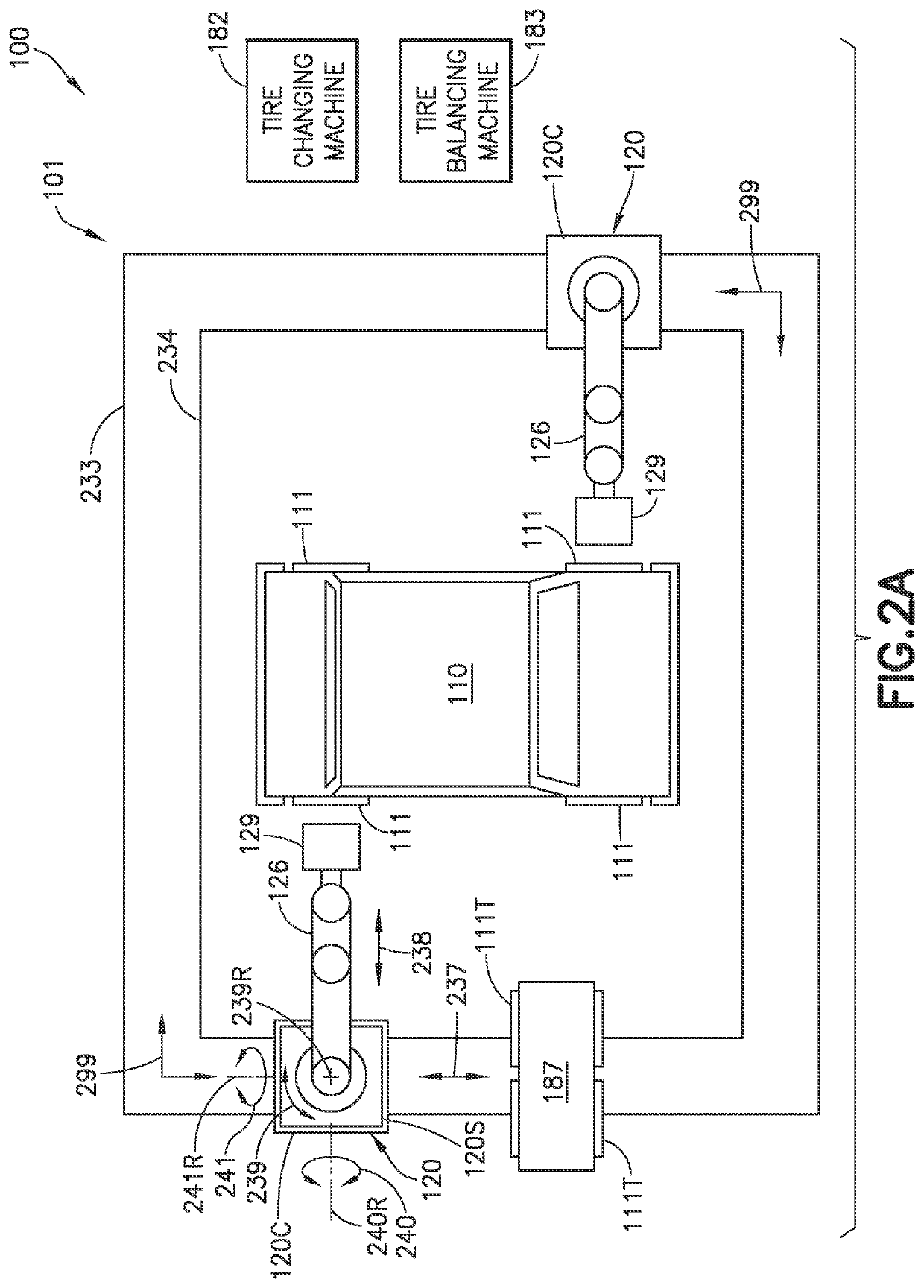Autonomous traverse tire changing bot, autonomous tire changing system, and method therefor
a technology of auto-transiting tire and tire changing system, which is applied in the direction of transportation and packaging, manufacturing tools, instruments, etc., can solve the problems of affecting the throughput and efficiency of automobile service facilities or centers, the inability of senior vehicle service technicians to meet demand, and the inability of auto-transiting tire changing bots to solve problems such as high cost and high labor costs
- Summary
- Abstract
- Description
- Claims
- Application Information
AI Technical Summary
Benefits of technology
Problems solved by technology
Method used
Image
Examples
Embodiment Construction
[0022]FIGS. 1A-1B illustrates an exemplary automated tire changing system 100 in accordance with aspects of the present disclosure. Although the aspects of the present disclosure will be described with reference to the drawings, it should be understood that the aspects of the present disclosure can be embodied in many forms. In addition, any suitable size, shape or type of elements or materials could be used.
[0023]Referring to FIGS. 1A-1B and 3, the aspects of the tire changing system 100 described herein automate the process of changing tires 111T on a vehicle 110. As will be described herein the tire changing system 100 provides for changing tires with the wheel 111W on (i.e., in situ) the vehicle 110 or by removing the wheel 111W from the vehicle 110. In one or more aspects, the tire changing system 100 provides for an operator of the tire changing system 100, such as a vehicle service technician 199, to select an in-situ tire change or a tire change by removing the wheel 111W fr...
PUM
 Login to View More
Login to View More Abstract
Description
Claims
Application Information
 Login to View More
Login to View More - R&D
- Intellectual Property
- Life Sciences
- Materials
- Tech Scout
- Unparalleled Data Quality
- Higher Quality Content
- 60% Fewer Hallucinations
Browse by: Latest US Patents, China's latest patents, Technical Efficacy Thesaurus, Application Domain, Technology Topic, Popular Technical Reports.
© 2025 PatSnap. All rights reserved.Legal|Privacy policy|Modern Slavery Act Transparency Statement|Sitemap|About US| Contact US: help@patsnap.com



